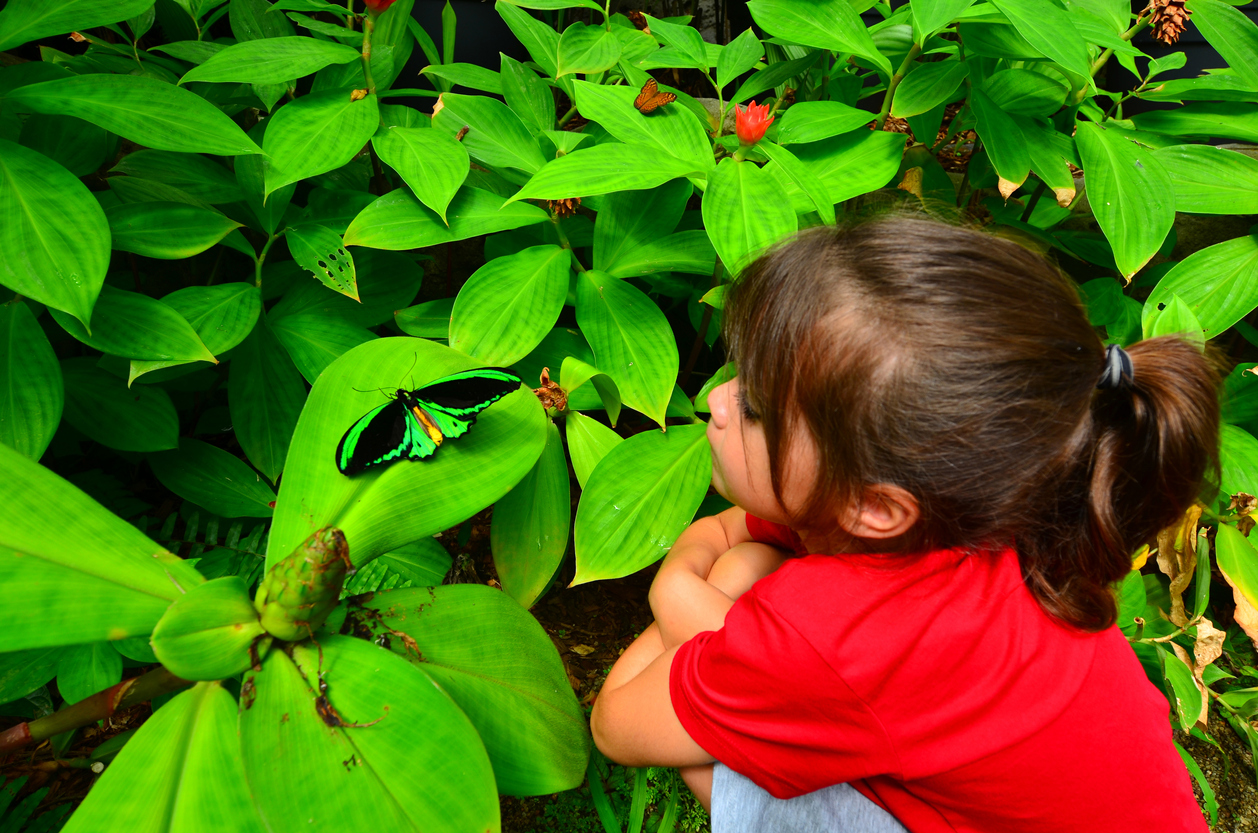Create Your Own Seed Viewer
For your supplies, you’ll need a clear plastic or glass container, construction paper, paper towels, dry beans, and water.
Cut a piece of construction paper and use it to line the inside bottom of your container. Crumble up your paper towels and begin stuffing your cup, until it is full. Place 3 to 4 beans around the sides of the container near the bottom, between the paper towels and above the construction paper liner. Saturate the paper towels. Place your container on a windowsill. Make sure that you keep the paper towels moist by watering as needed.
The outside of the bean will begin to wrinkle as the seed coat begins expanding and the root will begin growing in about two to three days. Once the roots emerge, the stem and leaves will begin to grow.
Create a Kitchen Scrap Garden
Reuse the scraps in your kitchen to create a kitchen scrap garden and grow plants from the fruits and vegetables pieces that you’d normally throw away. Fruits and vegetables that work well for this are potatoes, ginger, onions, beets, carrots, oranges, lemons, limes, and avocados. You can use many other fruits and vegetables also.
Once you’ve gathered the scraps that you will use, they will either need to be planted in potting soil or immersed in water, depending on the plant.
For starting little seeds – like citrus fruits – fill a 4-inch diameter pot with moistened potting soil and plant three to four seeds one inch deep in the pot; the seeds should start to sprout in two to four weeks. Keep the seedling well watered and then transplant the individual trees after about six weeks. Don’t get your hopes up for fruit too early – these trees won’t bear fruit for years. But the leaves will smell like whatever citrus you’ve planted, so enjoy the smell by rubbing the leaves.
For starting big seeds, like fruit pits, let the pits dry out for a day or two and then plant in a 6-inch-diameter pot filled with moistened potting soil. Leave the tip of the pit exposed to air. You can also sprout an avocado by suspending the pit over a glass of water; poke toothpicks around the middle of the pit and balance the toothpicks on the rim of the glass and add water until it just touches the pit. Once roots and a sprout emerge, replant the pit in potting soil.
More planting fun with water can be had with potatoes and ginger. Using toothpicks like with the avocado, take a potato and suspend it over a glass, with the bottom half submerged in water. Place it in a sunny window and roots will begin to sprout from the part underwater, followed by stems and leaves from the top. Transplant the potato into potting soil once it has a good root system. Do the same with ginger, suspending it over the water rather than submerging it, and transfer to a container of soil once the roots appear.
Bulb plants, like garlic and onions, are also easy to grow in your kitchen. You can also plant old cloves of garlic of bulbs of onions in containers filled with moistened potting soil and they’ll sprout within a few weeks.
Draw Butterflies Into Your Garden
Caterpillars often restrict themselves to a single species or a single group of closely related plants, Adult butterflies are more flexible in their needs for nectar plants than caterpillars. Good host plants for caterpillars include:
Perennials: Aster, clover, milkweed, nettles, snapdragons, violet
Annuals: dill
Shrubs and Trees: birch, black cherry, cottonwood, dogwood, sassafras, spicebush, tulip tree, willow
According to Penn State Extension, they “prefer purple, red, yellow, orange, or pink blossoms; flat-topped or clustered flowers; and short flower tubes.” To provide a continuous food source and attract butterflies through a large portion of the year, plan your garden so that it has blooming flowers from spring to early autumn. To entice the butterflies more, choose to leave the area unmowed and weedy because butterflies are attracted to weedy areas.
For butterflies, nectar plants include:
Perennials: aster, bee balm, black-eyed susan, blazing star, butterfly weed, coreopsis, cosmos, gayfeather, geranium, goldenrod, ironweed, Joe-Pye weed, milkweed, phlox, purple coneflower, verbena
Annuals: lantana, marigold, sunflower, zinnia
Shrubs or Trees: azalea, blackberry, raspberry, buttonbush, lilac, sweet pepperbush
Plant your butterfly garden in a sunny area sheltered from wind. You can plant a larger flowering shrub to use as a sunscreen, and provide food and shelter to butterflies. Limit the use of pesticides and herbicides in the garden; these may poison your butterflies and eliminate food sources for caterpillars. Pests can often be avoided by using a variety of plants. Include a butterfly puddle to attract male butterflies.
Creating a Butterfly Puddle
For your supplies, you’ll need a shallow container, sand, and salt. Fill your shallow container to the top with sand. Add a pinch of salt and mix with the sand; flatten the sand/salt mix and then create a depression in the center to hold water. Add water and place in your garden, preferably near plants that attract butterflies.
